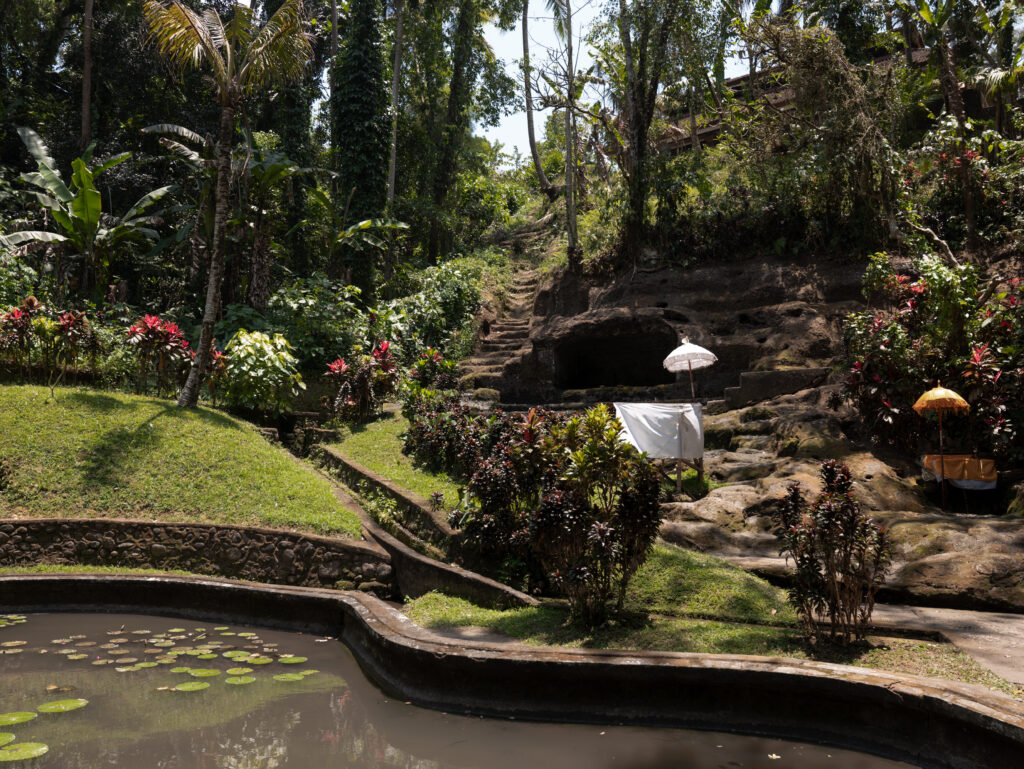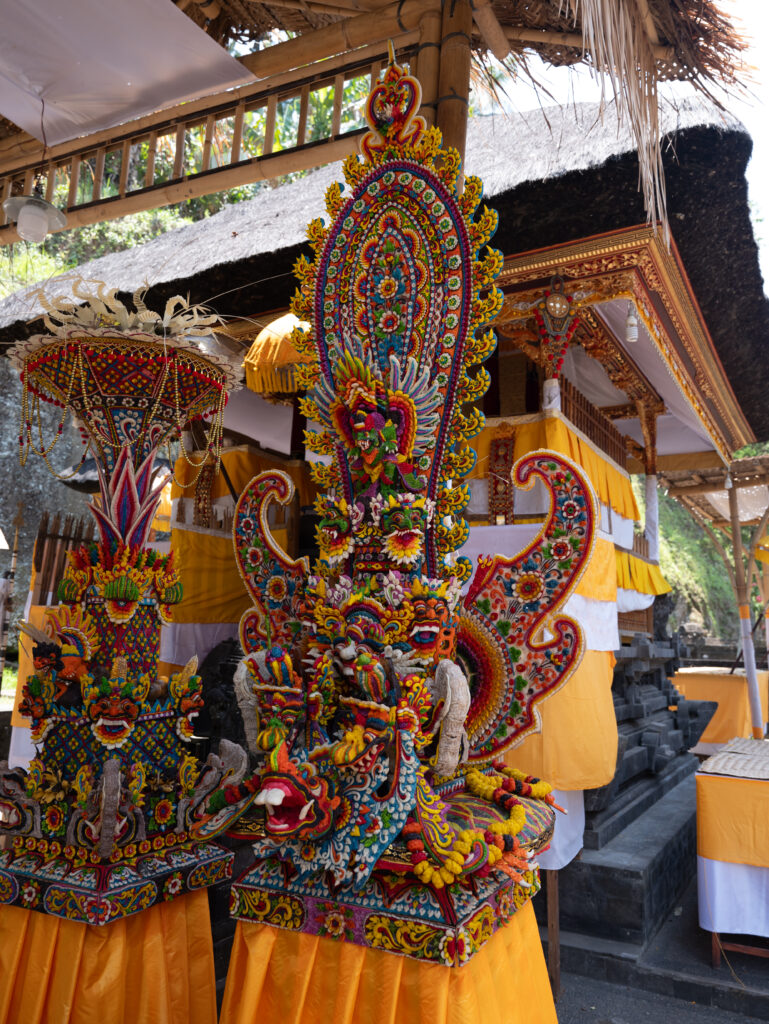As you explore Bali, you’ll certainly see various temples with intricate stone details, pretty gardens, and water features. These sacred places are beautiful even from the outside, but we’d definitely recommend visiting a temple if you have the opportunity. Goa Gajah Temple sits on the outskirts of Ubud and is a great spot to visit to learn more about Balinese culture and see the unique features contained within the complex. Here are some details to know before you visit!

About Goa Gajah Temple
Goa Gajah is a unique temple that displays the Buddhist and Hindu cultural influences on Bali. The name translates to ‘Elephant Cave’, but historians aren’t exactly sure where the name came from. The year the temple was built is also not certain. Experts think parts of the sanctuary were built between the 9th and 11th centuries, but the river was a place of worship and rituals before that. With both Buddhist and Hindu symbolism found around this historic temple, it is believed that this has long been a sacred place among both groups.
Goa Gajah Temple was listed on the UNESCO World Heritage Site list in 1995. Today, it is both a popular tourist attraction and a place of active worship.

Getting to Goa Gajah Temple
Goa Gajah Temple sits on the outskirts of Ubud in a village called Bedulu. If walking from the heart of Ubud, it’s about an hour each way on foot. It takes only about 10-15 minutes by car to reach the temple from the city center.
When exploring Bali, many choose to rent a scooter or car. If you drive your own vehicle, there is a paid lot just by the temple you can park at (see fees below).
Alternatively, you can easily reach Goa Gajah by taking a taxi or Grab/Gojek. Note that the taxi mafia might be hanging out around the temple, so to reserve a ride back to Ubud with a Grab or Gojek, you may have to walk a bit away from the lot.
You can also hire a driver for the day if you are exploring much of the area. This is what we did as we had gone to Suwat and Tibumana waterfalls earlier in the morning. You can find many companies online or as you walk around Ubud to hire a driver. Your accommodation can also generally organize a ride for you.
Lastly, there are various tours that include Goa Gajah as a stop in their itinerary. Many of these companies can be found online or you can book upon arrival in Ubud. This is a good option if you want to see multiple attractions in the area and learn more about the history and culture. If you don’t go for an organized tour, but want to learn more about the temple’s history, there are some guides available to hire at Goa Gajah.

Fees
Entrance to Goa Gajah Temple costs 50,000 IDR per adult. This also includes the use of a sarong if you aren’t wearing the appropriate attire.
If you drive to the temple, parking costs 2,000 IDR for a motorbike/scooter or 5,000 IDR for a car.
These fees are payable only by cash.

Hours & Regulations
Goa Gajah Temple is open daily from 8am to 5pm to tourists. We’d recommend visiting near opening if you want to avoid the crowds and tour buses. You can visit the temple for religious purposes during that time or outside of those hours.
The temple may close to tourists during certain holidays and celebrations.
To enter the temple, visitors must be dressed appropriately. If you’re wearing clothing that doesn’t cover your knees, you’ll have to tie a sarong around your waist. These are available to borrow upon entry, so don’t feel the need to buy one from vendors who pressure you to purchase between the parking area and temple entrance. Of course, you can buy a sarong from them if you’d like to have one to keep. Make sure you are also wearing a top that isn’t too revealing.

When exploring the temple grounds, be respectful of those who have come to worship and the offerings they may have placed. This is an important historical location, so also be respectful of the structures and gardens.
Exploring Goa Gajah Temple
Our driver dropped us off in the parking area and we made our way through the row of vendors towards the temple entrance. We paid our entrance fee, tied the sarongs given to us, and headed down the stairs into the complex.

This temple complex holds a lot of history. If you’d like to learn more about Balinese culture and the history of the place, there are ‘guides’ of sorts within the temple. They aren’t official guides really, but will instead approach and begin to tell you about the temple. If you’re interested in learning more, they can accompany you and show you around. If you’re not interested, just politely decline and move along. We didn’t hire one since our driver had told us a bit about the place, but from what we’ve seen, these guides charge around 100,000 IDR.
The most popular attraction at the Goa Gajah Temple is the Elephant Cave. The rock around the cave is intricately carved and the opening forms the mouth of a figure chiseled into the stone. Follow the narrow tunnel a short ways into a room that features the figures of Hindu deities and nooks where offerings are placed. When we visited, it wasn’t too crowded. But on busy days, you may have to wait in line to enter the cave as there isn’t much space inside.

In front of the cave are some bathing pools and other carved structures. Some people just come to see the cave and main courtyard, but we recommend walking further into the complex to stroll through the gardens. There are some other stone carvings and structures, massive old trees, small waterfalls, and pretty pathways.



Like this Post? Pin it!




